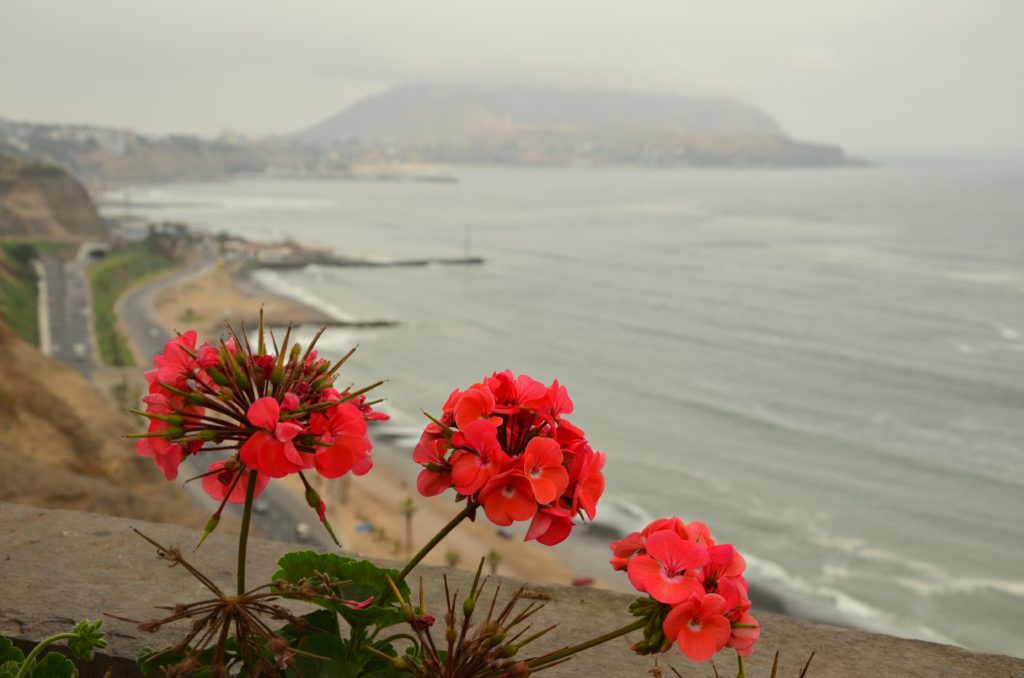You haven’t probably heard a lot of recommendations for Lima, as it is just the entry gate to Perú. But if you can afford to spend 1-2 days in the capital, you will not regret. Here is how we spent 1 day and 1 night in Lima.
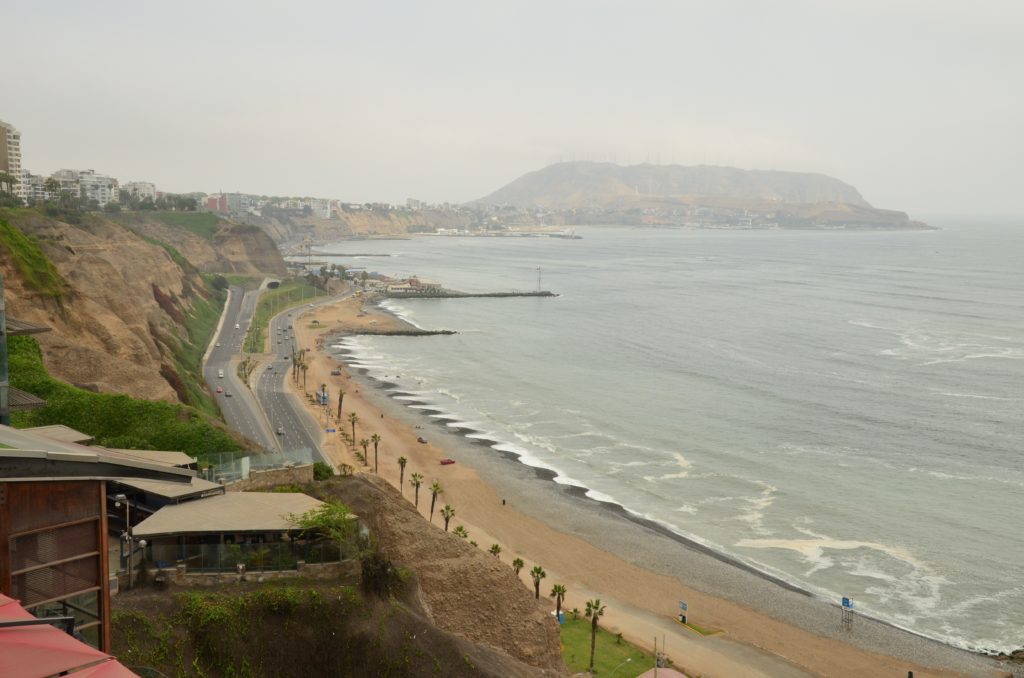
Peruvian gastronomy on the Pacific coast in Miraflores
Our first night in Lima, we went out with our friends Carlos from Perú and Eva from Hungary (they both used to live in Brussels). Carlos took us to a chic Mangos restaurant in Miraflores and we sit on the terrace in order to enjoy the gentle breeze from the ocean.

It was obligatory to try the famous Pisco Sour as the first drink in Perú – a delicious cocktail with egg whites, lime and cinnamon. Carlos wanted us to taste local specialties such as anticucho (beef heart that is apparently delicious according to meatlovers who tried), meat croquets, cheese and yuka croquets, and corn rolls, accompanied by a delicious cheese sauce called Huancayina. After we got another selection of mostly raw fish appetizers, out of which I only tasted the sweet potatoes and white corn – not bad. As still hungry, we asked for another plate with some cheese and meat rolls accompained again by the famous and tasty Huancayina sauce. We finished the night with second round of Pisco Sour, waking up still a bit tipsy the other day – Pisco Sour did not seem, but it was pretty strong!
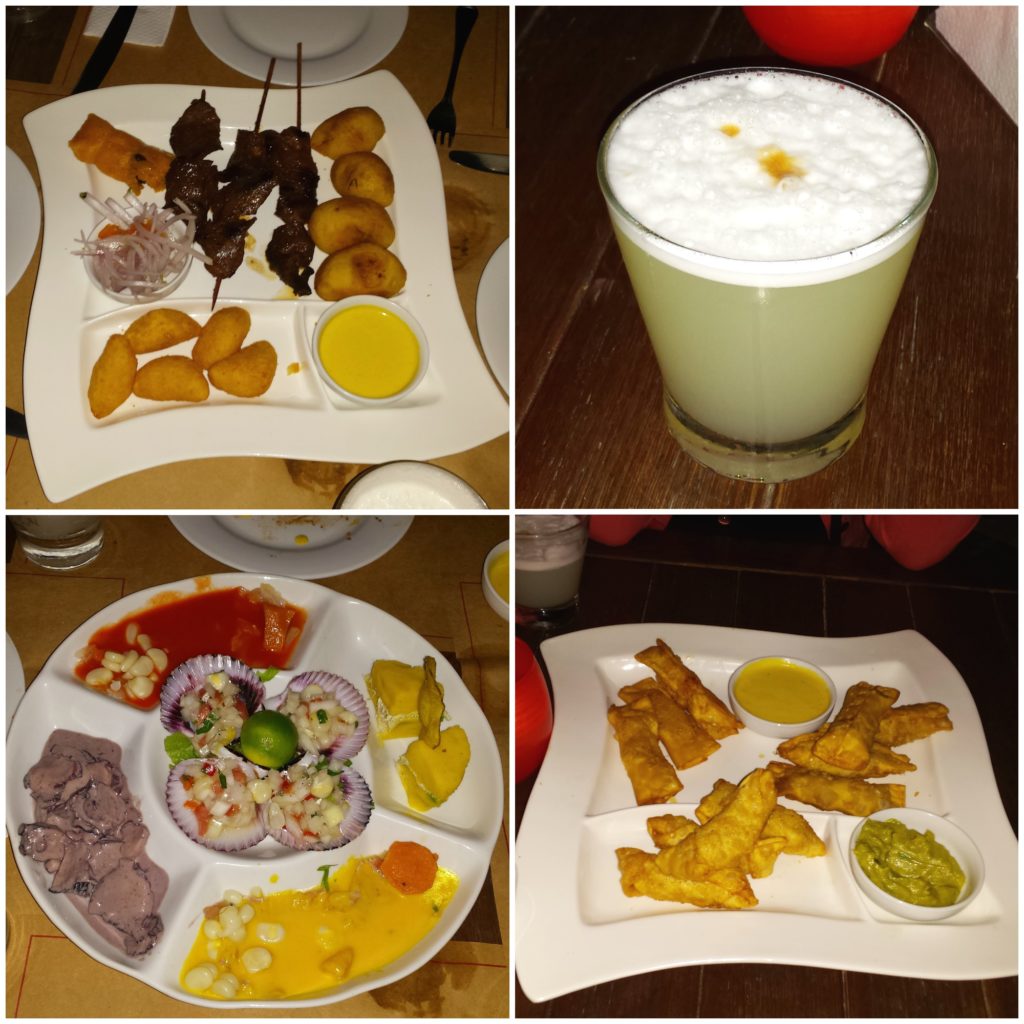
We started the other day in the Kennedy park in Miraflores, which is known as park “El Gato” thanks to many cats relaxing here. 🙂
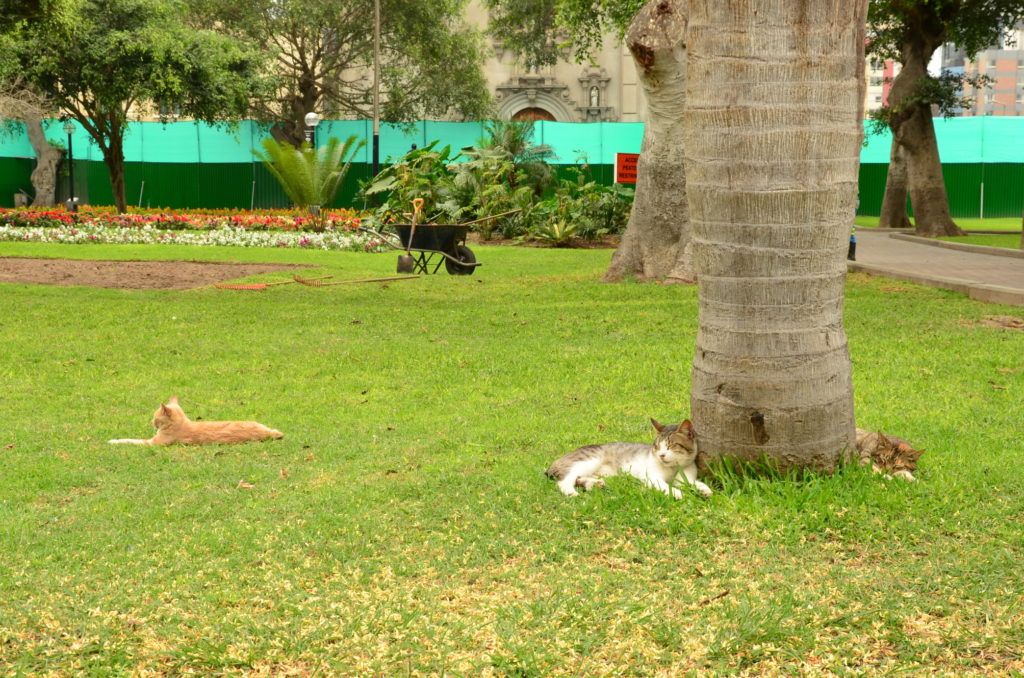
Heading once more to Miraflores coast to admire the rocks and parks during the day. The sky is grey and we understand why the author of Moby Dick Herman Melville called Lima “the most sad city on the Earth” (but honestly this is our everyday standard in Belgium, so not sure if he ever visited Belgium). 😉
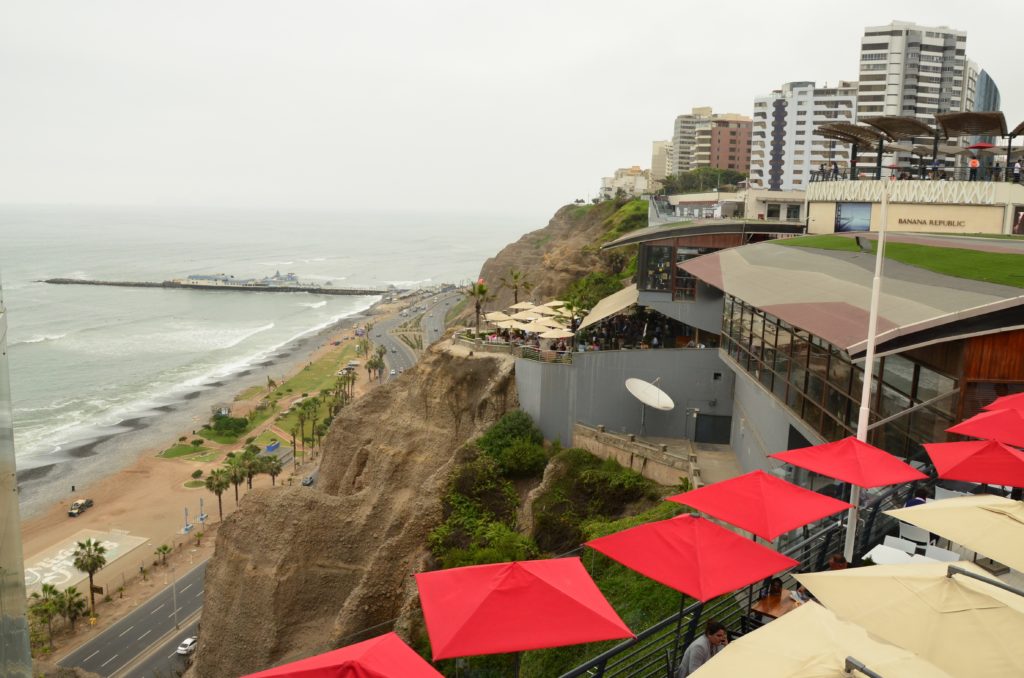

There is a modern and chic shopping center with many bars and restaurants. But this is not Perú as we wanted to experience, it feels more like in Europe…

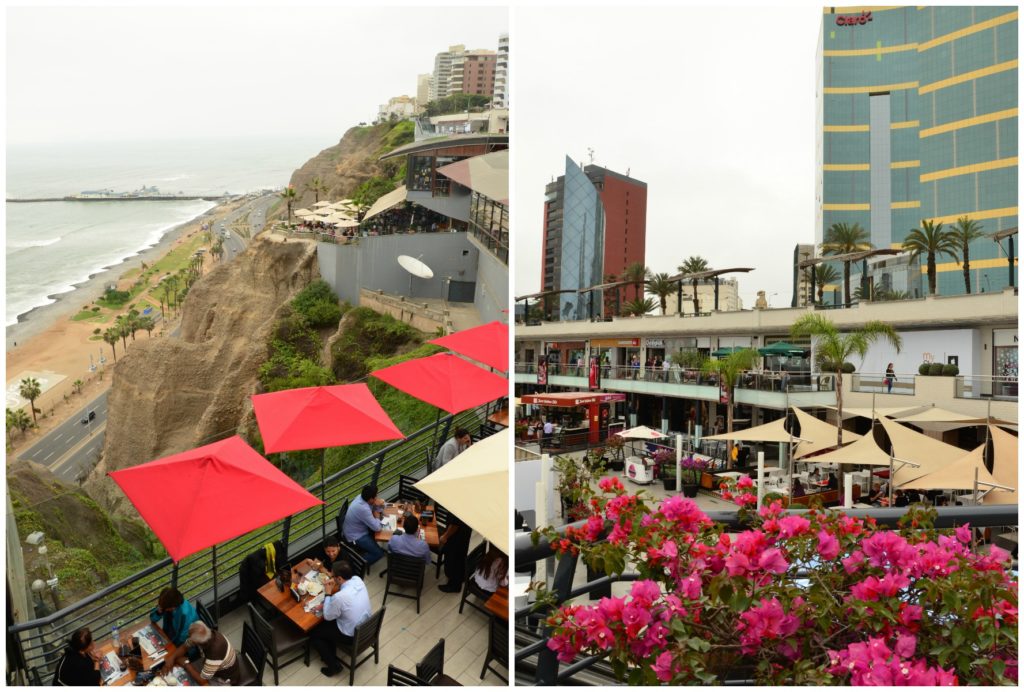
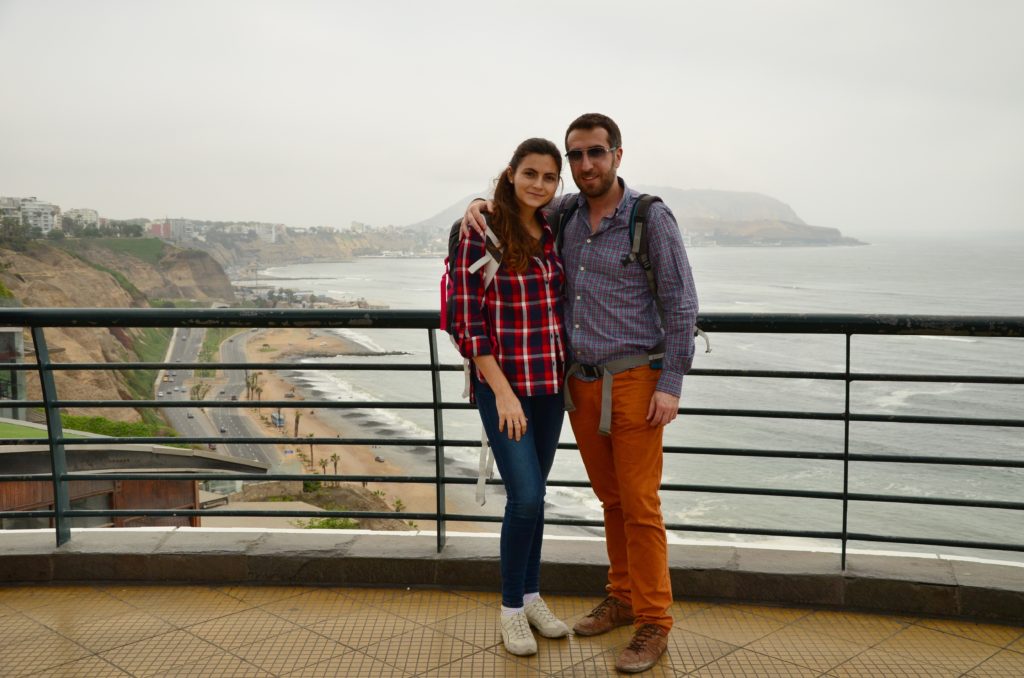
Beautiful colonial architecture in the historical center
We took Metropolitan bus which is a kind of fast bus as it has its own line on the road in order to avoid the traffic jams. But sometimes the buses are overcrowded. So first you are lucky if you can get into the third one and second, you are lucky if you are not mashed by other passengers.
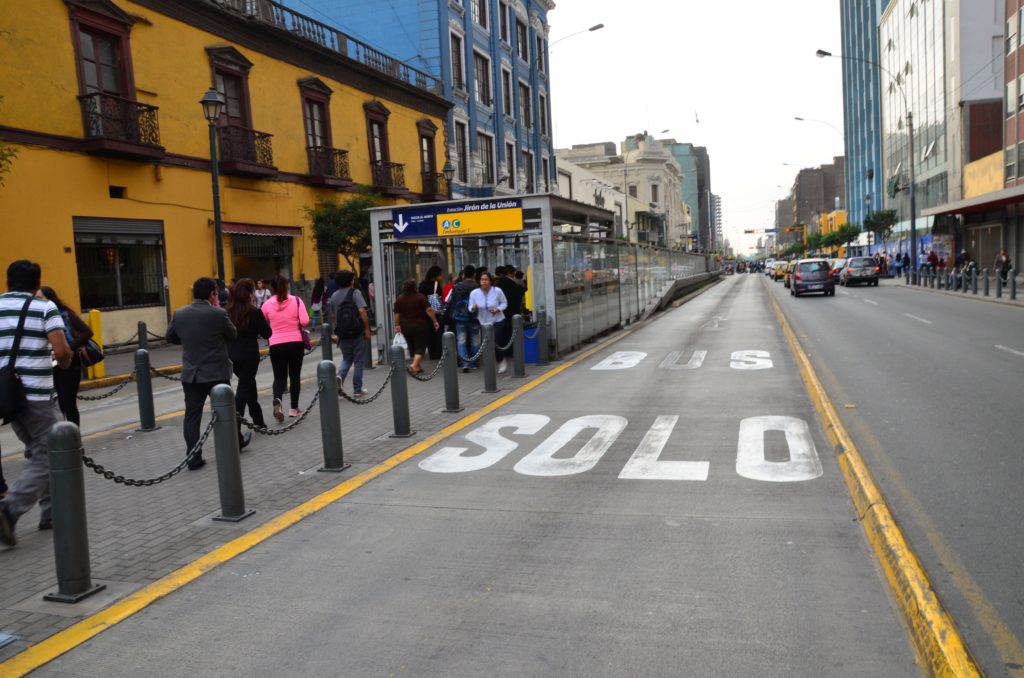
We got off at Jirón de la Unión stop and took a cozy street with nice colorful houses and shops direction to the Plaza de Armas.
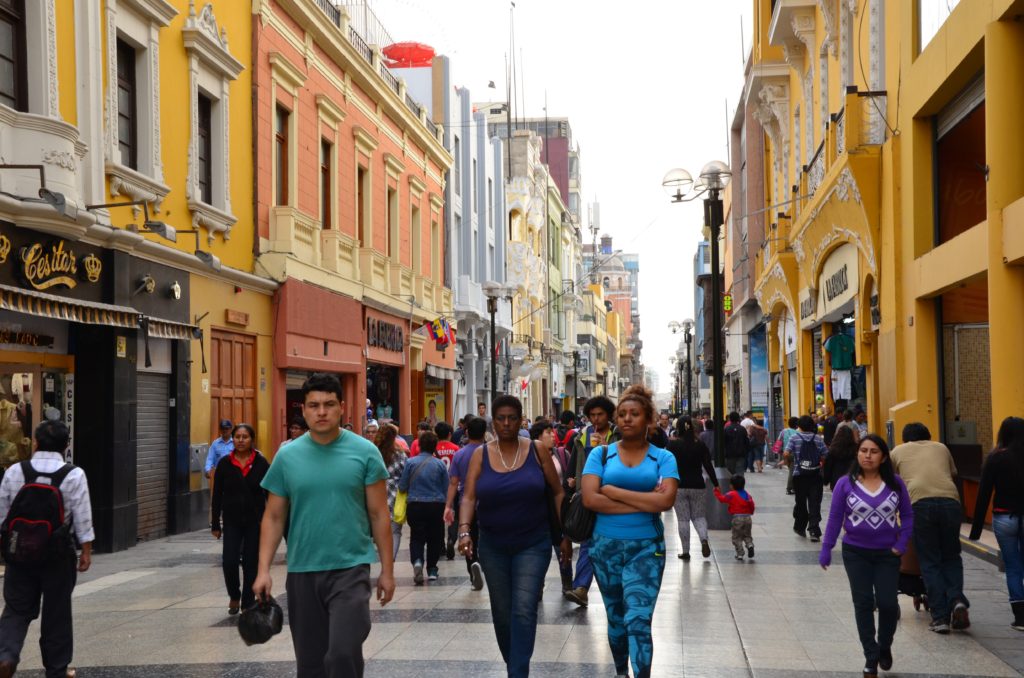
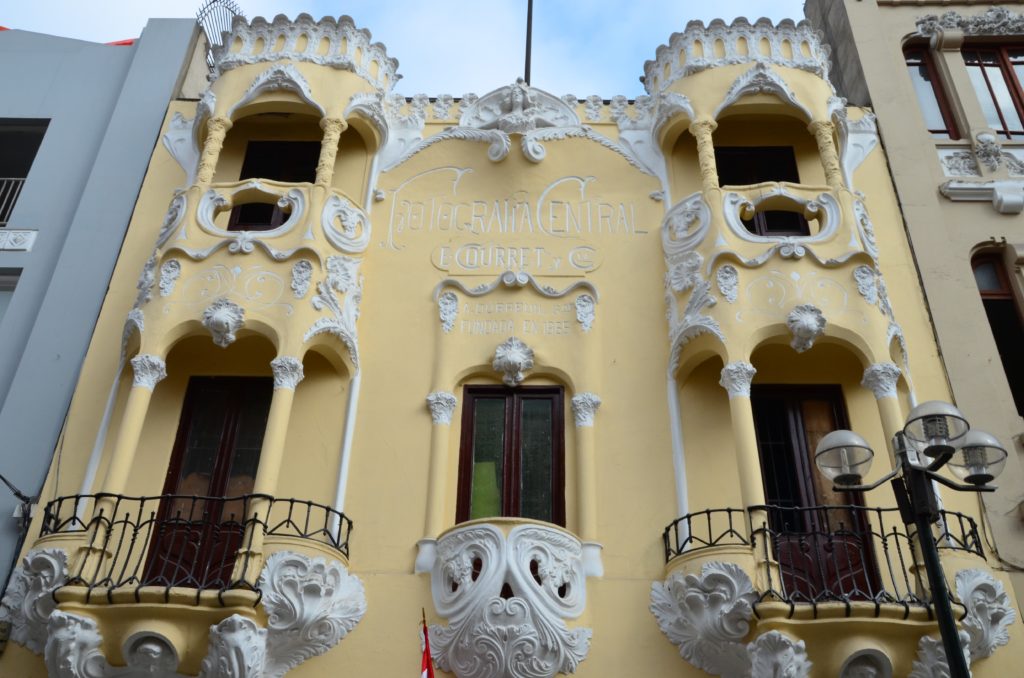
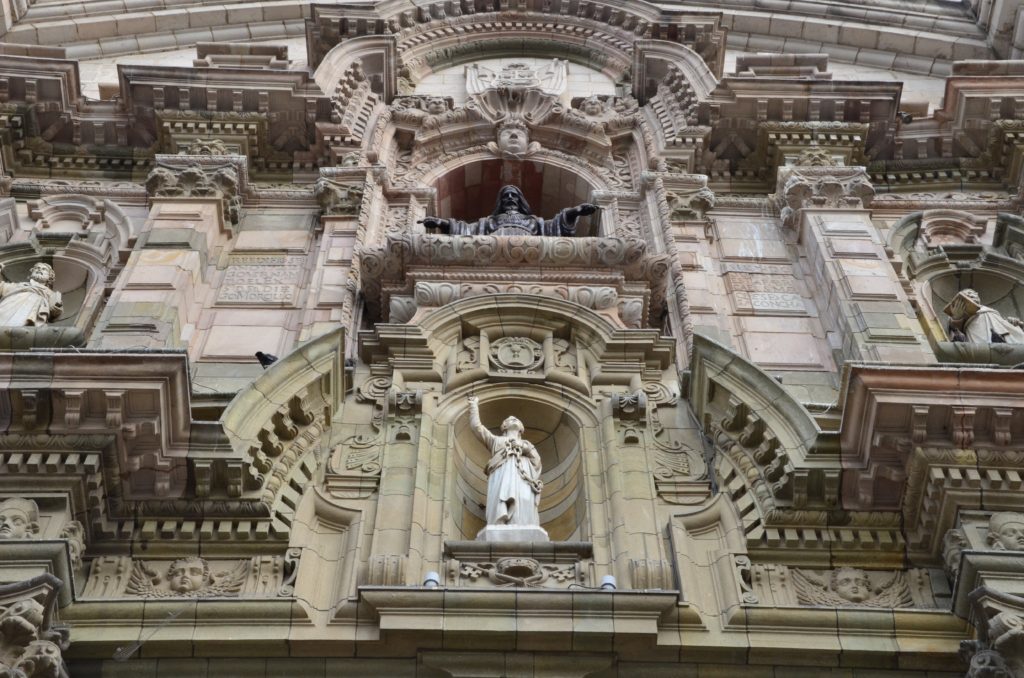
Plaza de Armas (or Plaza Mayor) is the historical heart of the city, classified by UNESCO as a world heritage since 1991, where you can really admire the true colonial style. The Cathedral has been situated here since the capital was founded, but the current edifice was built after the earthquake in 1746.
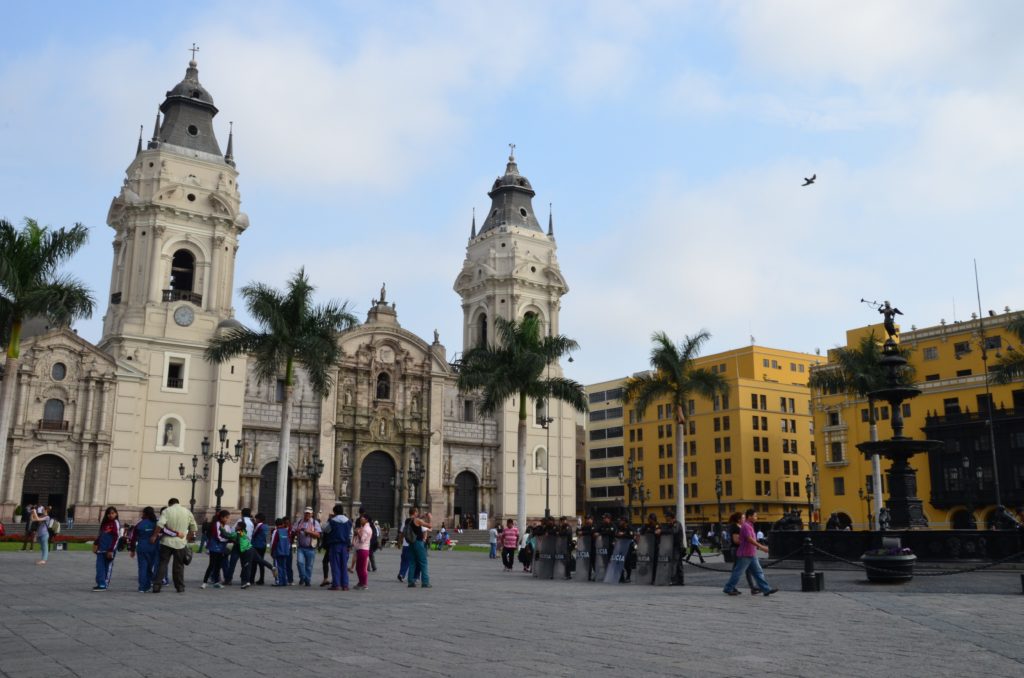
Next to the Cathedral, Palacio Arzobispal (Archbishop’s Palace) with beautiful baroque fasade and wooden balconys, original building dating from the period of capital foundation with some reconstruction in the beginning of the 20th century.
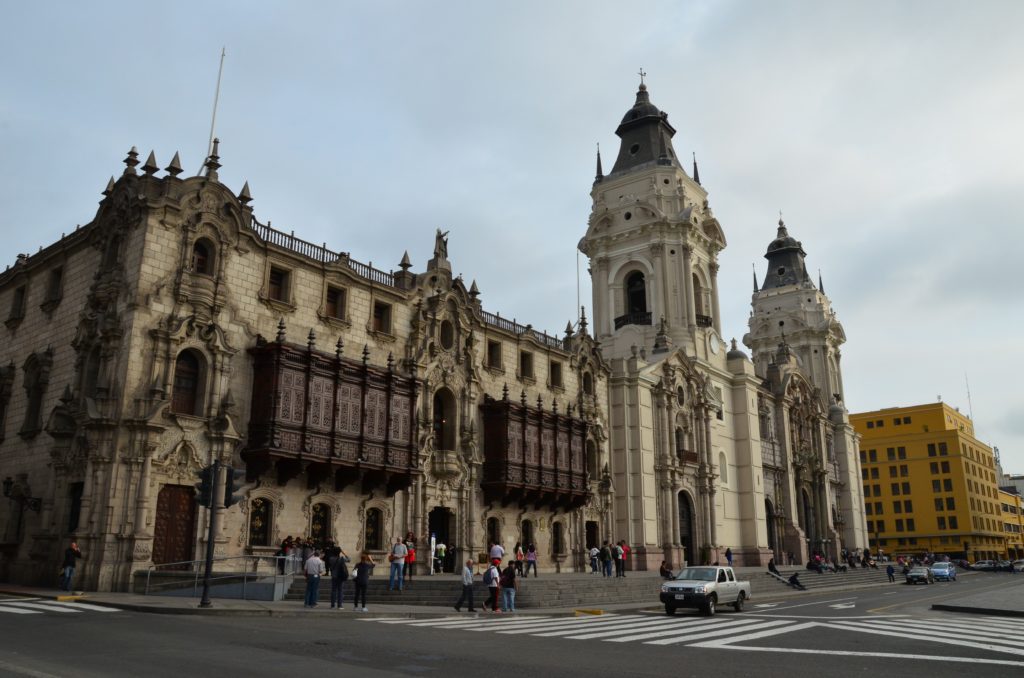
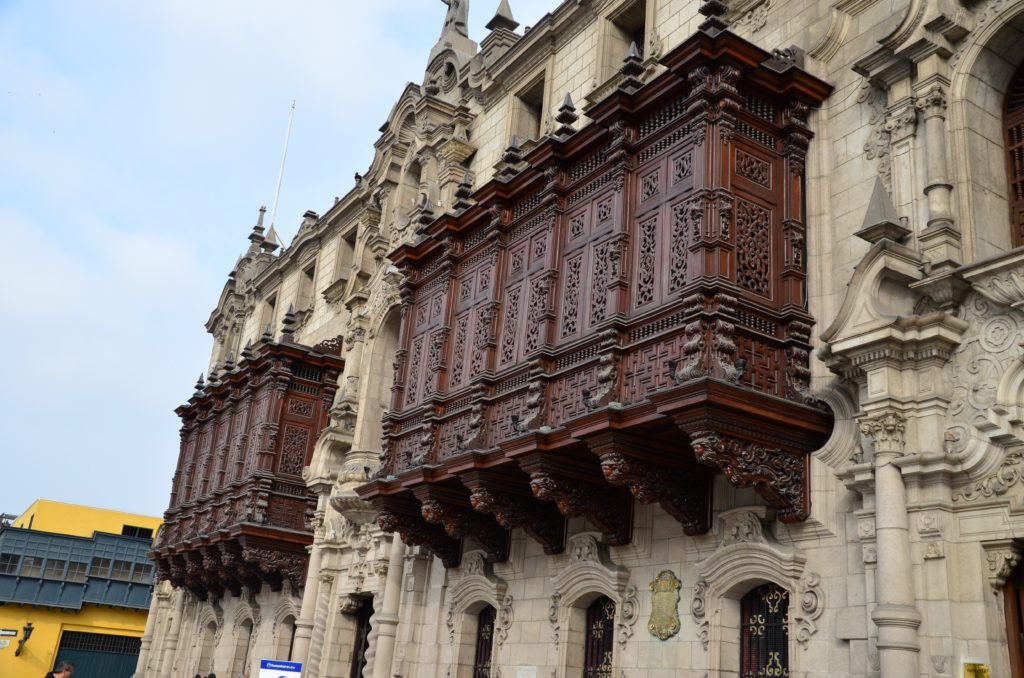
Le palacio de Gobierno (Government Palace) from 1920 is nowadays a residence of the President.
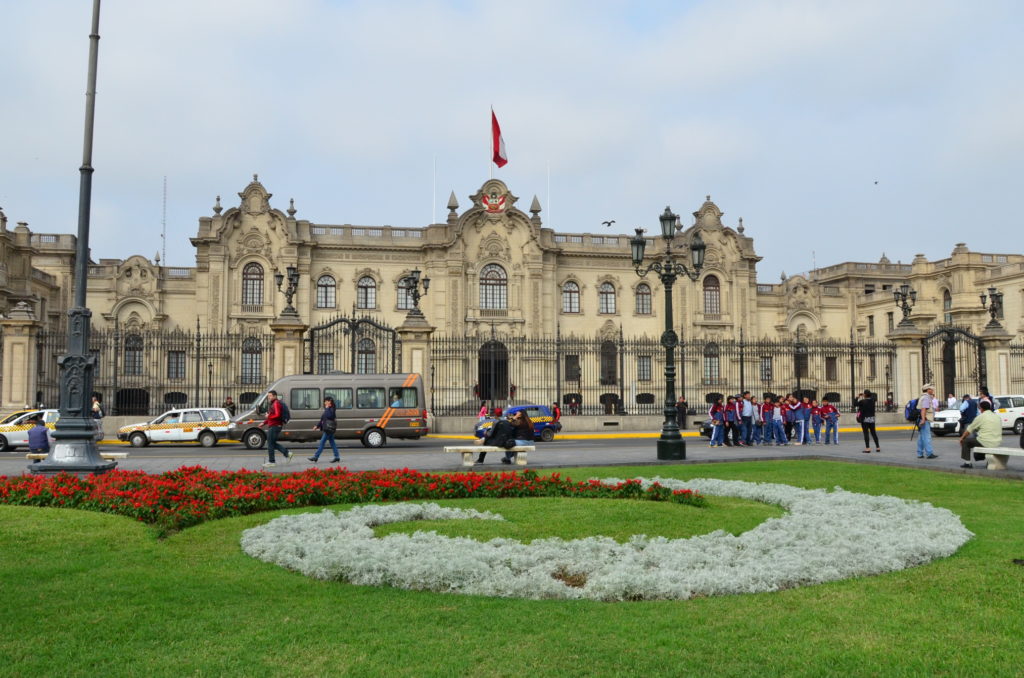
In the center of Plaza de Armas, we can find a bronz fountain from 1650.
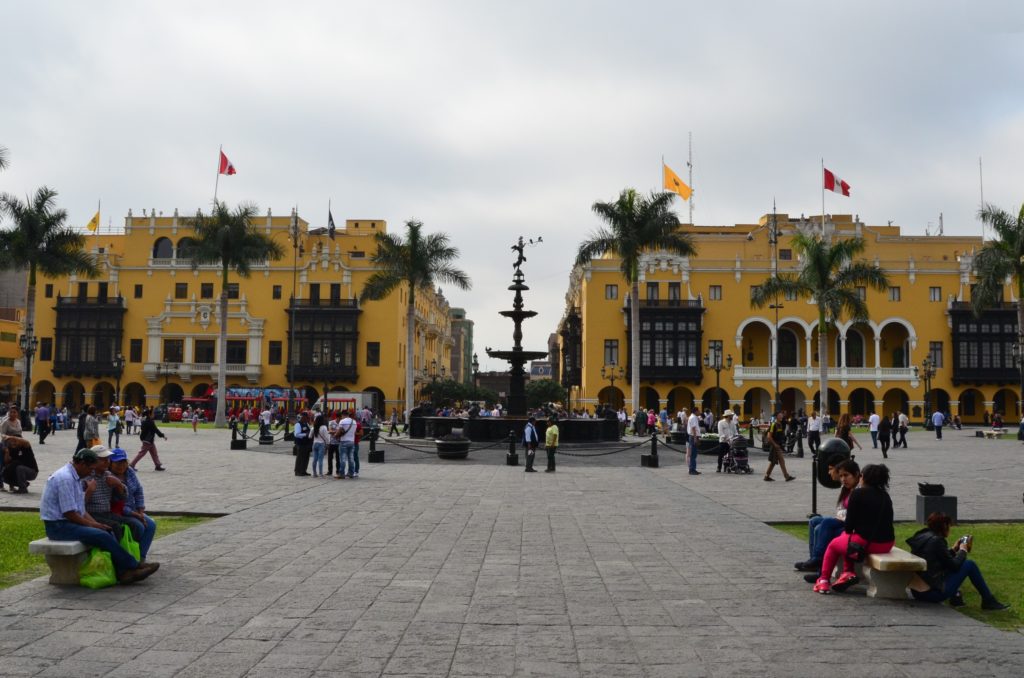
Not far away from Plaza de Armas, we can see this pistacio building from 1851 – a former train station Desamparados, nowadays a house of literature (Casa de la Literatura Peruana).
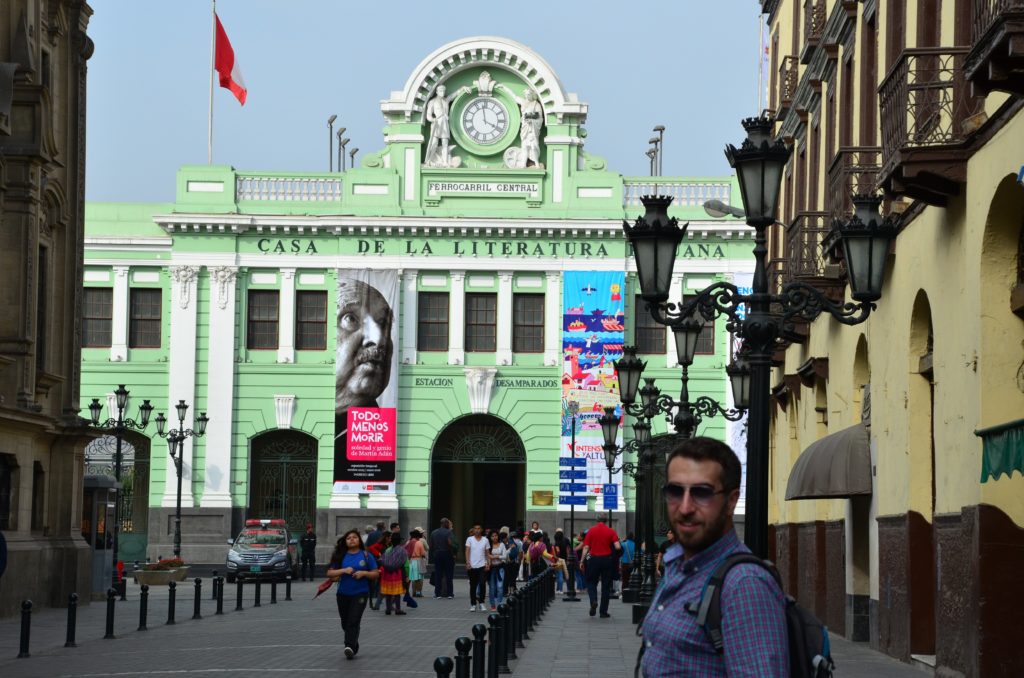
We continue to Basílica y convento de San Francisco de Asís. Soledad church on the left and Monastery of San Francisco on the right. The complex dates back to the half of 17th century and survived the earthquake in 1746.
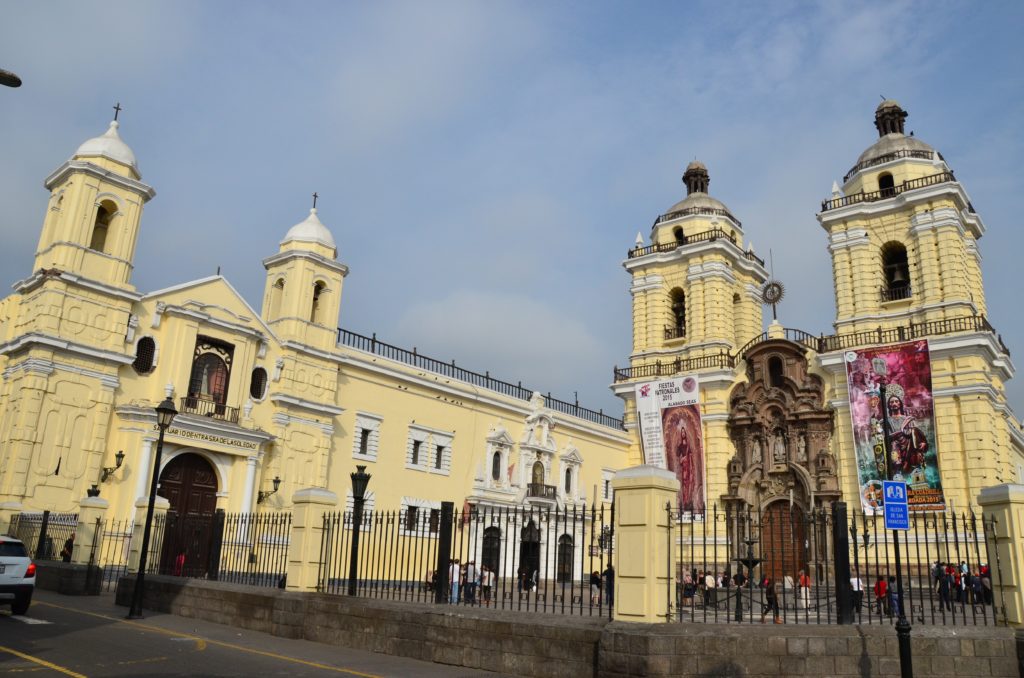
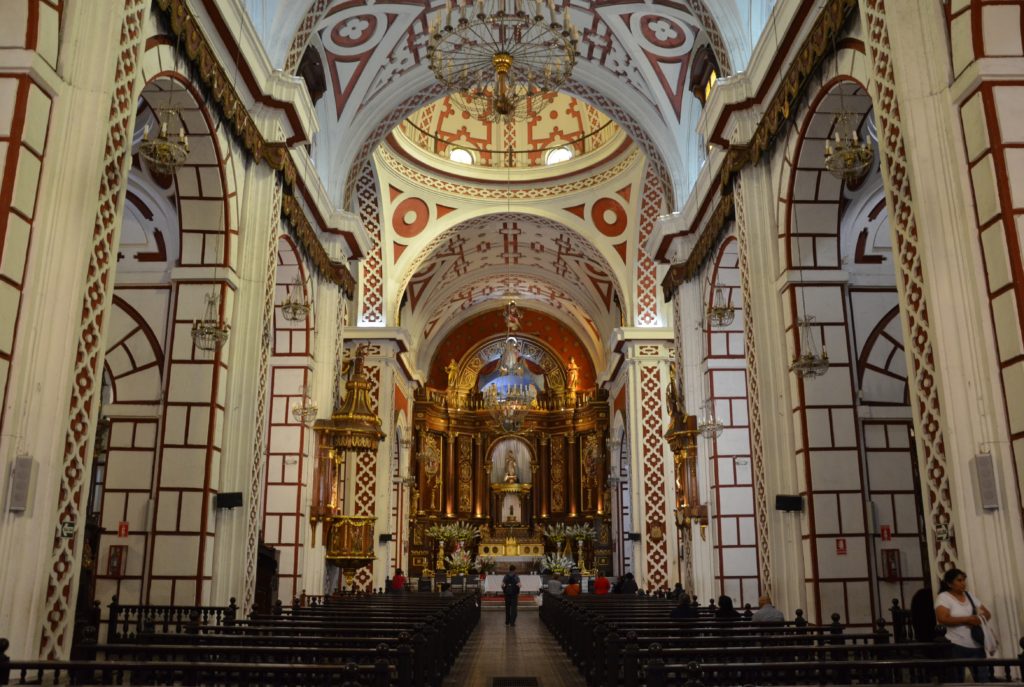
On our way back to Plaza de Armas, we ran into an open museum Museo de Sitio Bodega y Quadra. We walked in the ruins of a house where a Spanish noble family used to live.
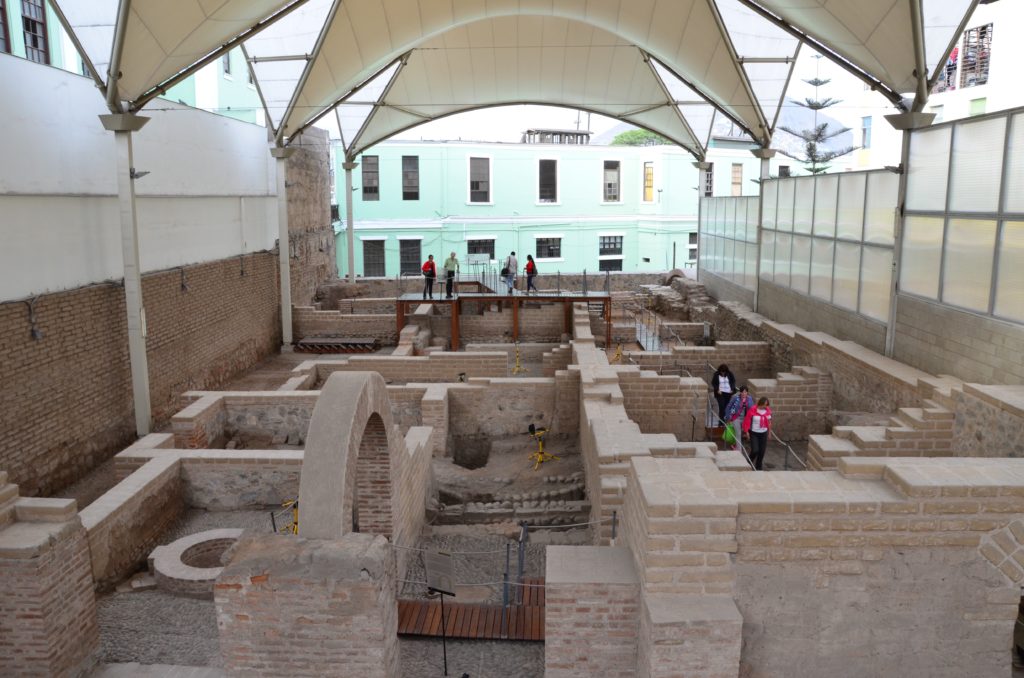
Center of Lima – that is also typical Peruvien souvenirs, children playing in the streets and women trying to sell anything to tourists.
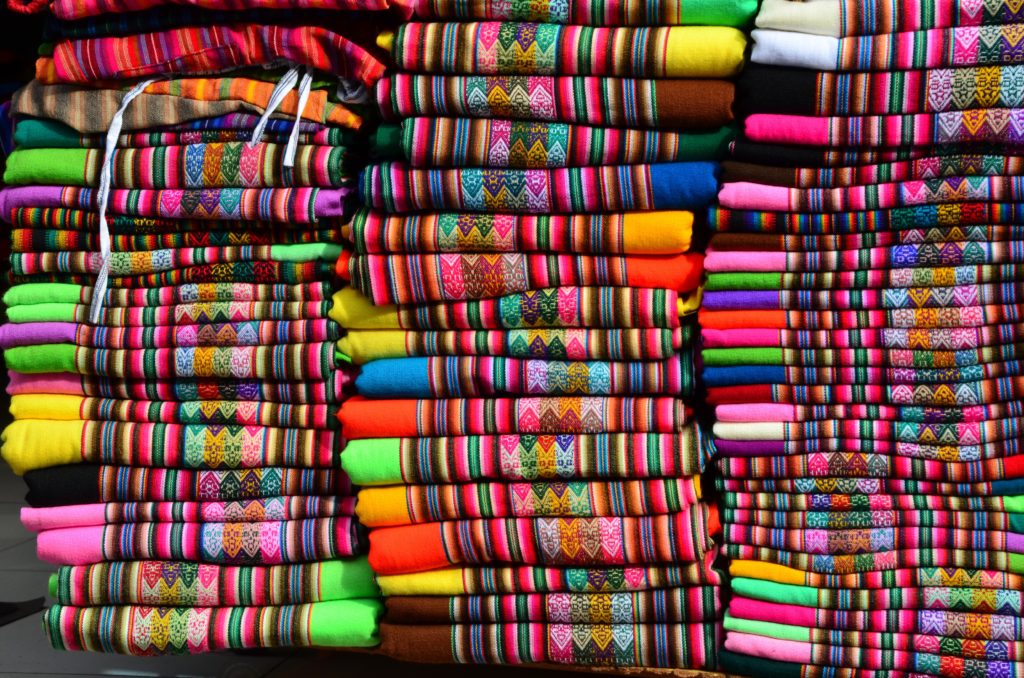
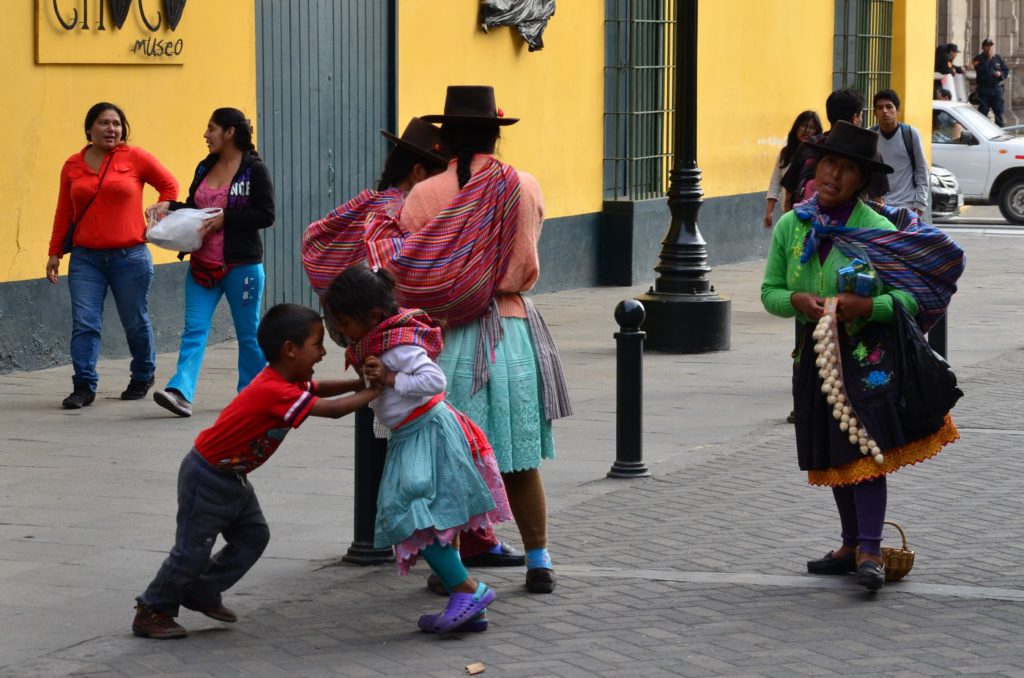
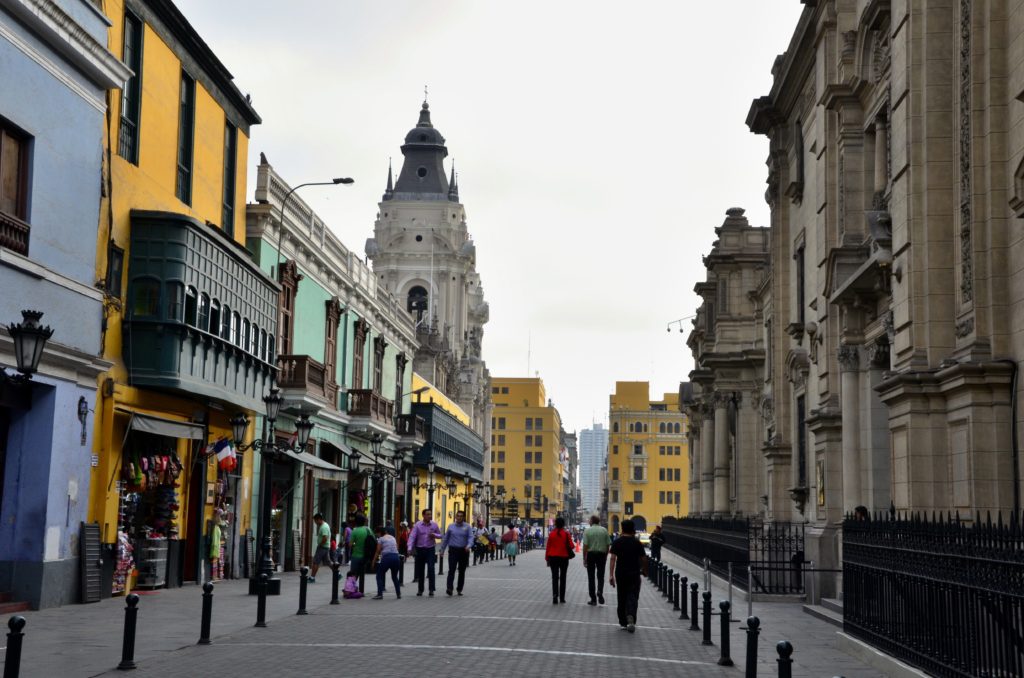
Discover controversal Rímac: former vibrating center, nowadays a poor district
Not far away from Plaza de Armas, you can see a hill covered with colourful houses – this is the oldest part of the city called Rímac, that used to be a vibrating city center in the past. Even though our guide said that visit was strongly recommended only in a car or bus, we were tempted to discover why. Already on the bridge over the Rímac river, you see people asking for money, women sitting on the sidewalk with a weighting machine, so if you feel like you gained some kilos while eating in Perú, you can check it here on the bridge 😉 for some small money. Once passed the bridge, we walked in the streets in Sevilla style and admired nice colonial houses and churches. After a while we understood that we were not welcome here, so we turned back and headed the safe part of the historic center.
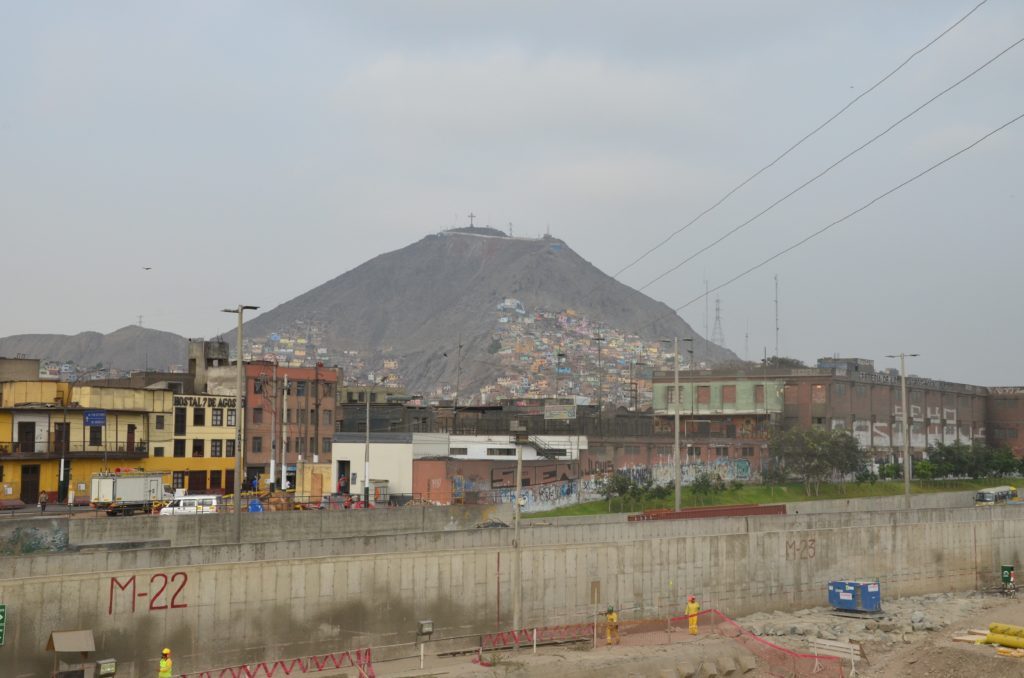
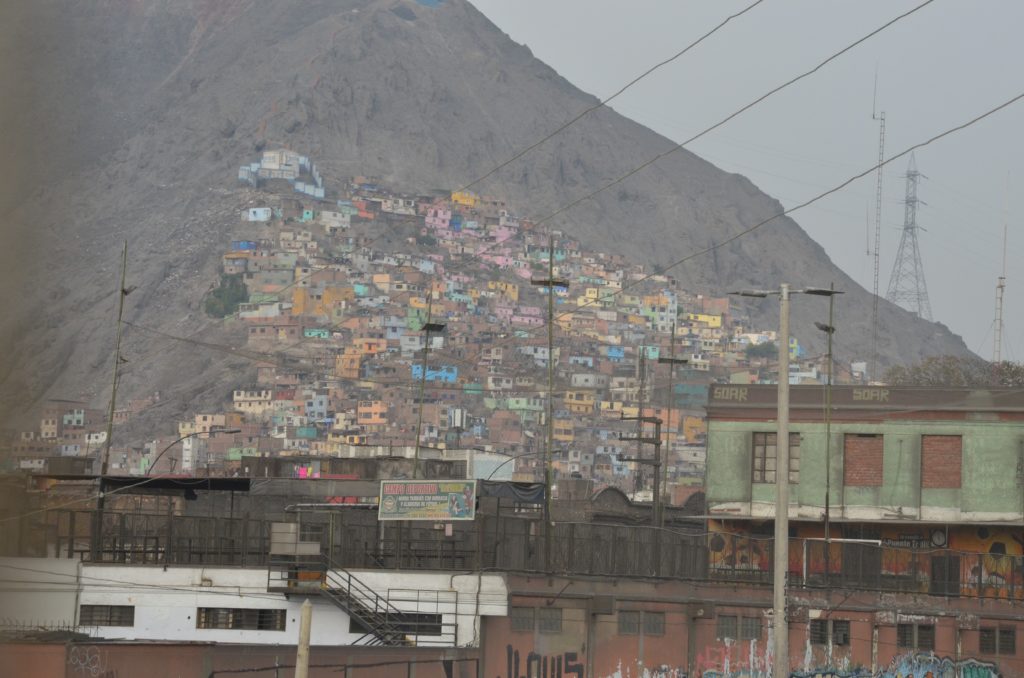
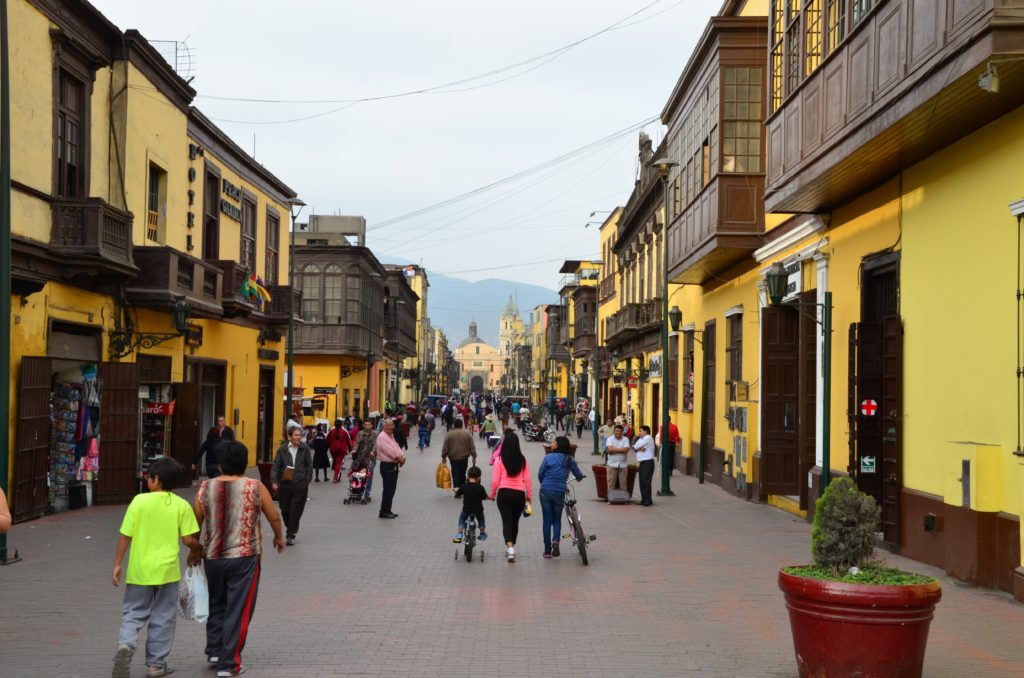
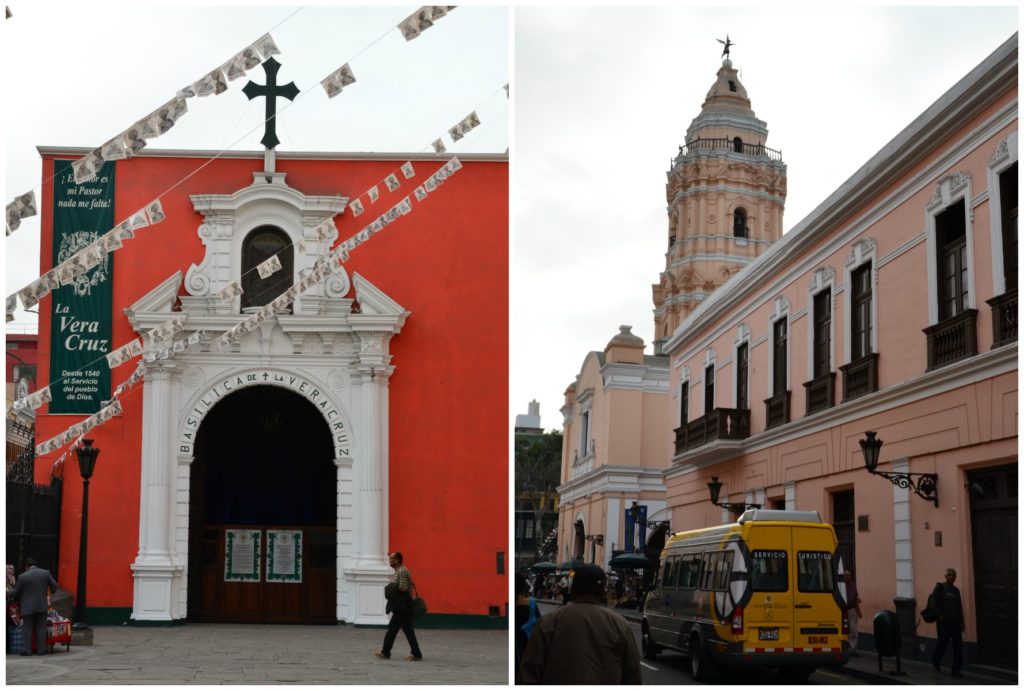
Romantic walk in bohemian Barranco
Barranco is a bohemian district in the South of Lima, not far from Miraflores, with many cafe’s, colourful houses, flowery and palm parcs, spa and viewpoints to admire the ocean coast. Lots of photographers and youg couples around. Even though we got to visit Barranco after the sunset, we felt in love with this corner of Lima.
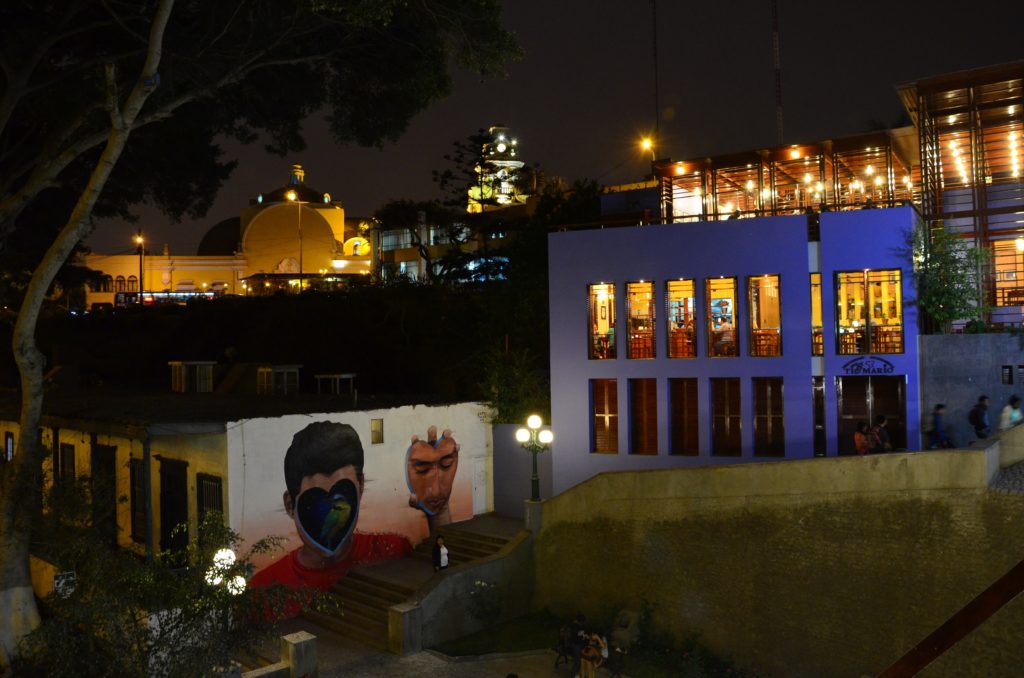
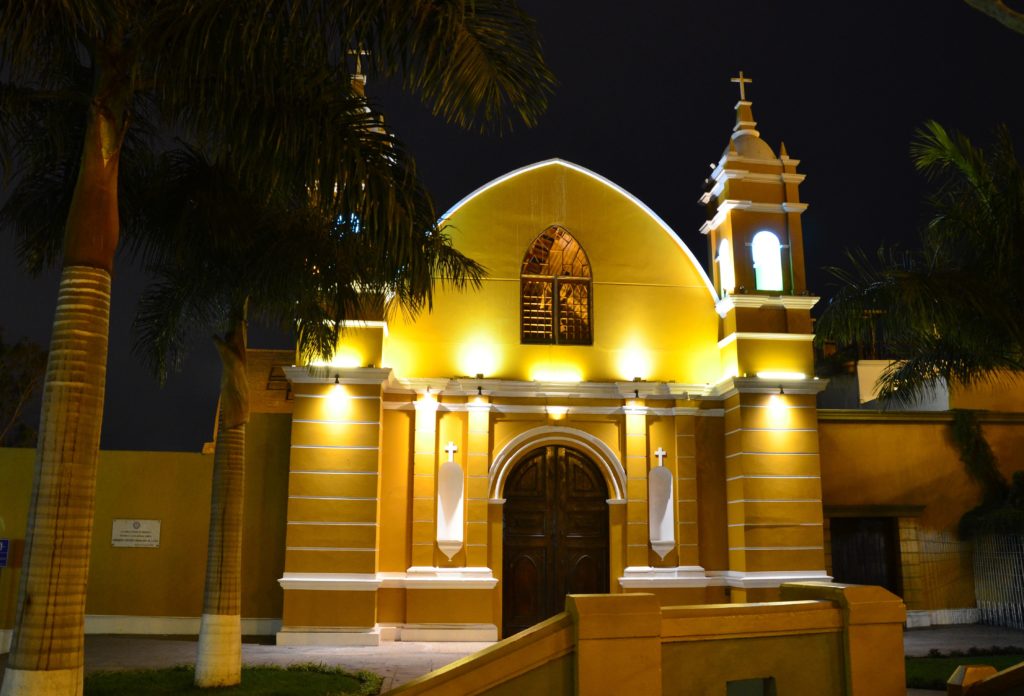
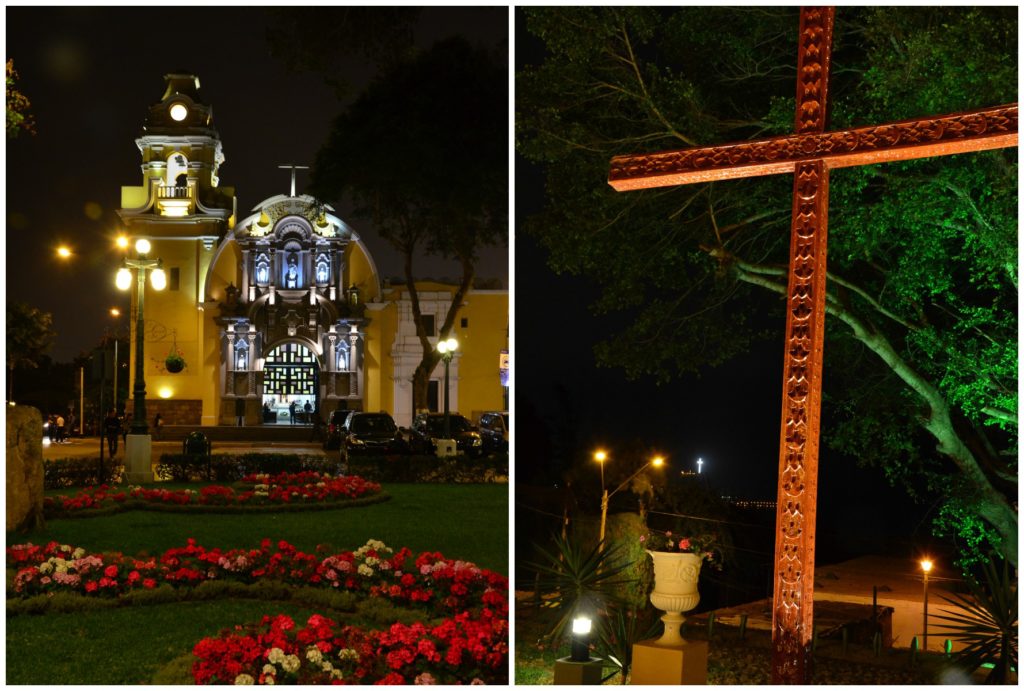
Some Facts about Lima
The Peruvian capital was founded in 1535 by the Spanish conquistador Francisco Pizarro as ‘la Ciudad de los Reyes’ (City of Kings). Nowadays it is an administrative, economic and cultural center of Perú.
Lima is the 5th largest city in the South America. There are approx. 10,000,000 inhabitants in Lima, which is 25% of the whole Peruvian population.
Regarding security in Lima: it is neither the safest, nor the most dangerous city in the world. If you stay in the historic center, Miraflores, Barranco or San Isidro and you don’t go to the power districts where the criminality is higher, you avoid walking alone in the night or with expensive objects, it is not risky at all. During the day, police is around which gives you a safety feeling. They guard the entries to the banks so when you need cash, forget lonely ATMs and go to such a secure place.

The Peruvian capital is one of the driest capitals in the world with an extreme humidity. Local clima is subtropical and desert with minimal precipitation and the humidity can reach 100% between June and December. Water is a luxury here in a certain way, and it represents a challenge for engineers in the comming years.
Lima is also the second most polluted city in the South America. Already upon our arrival, we could smell the air pollution and also hear the noise from cars and we never got used to that during our short stay – it was just too much for our lungs and ears.
